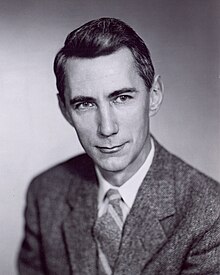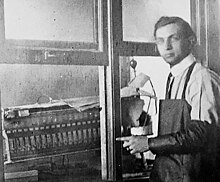Portal:Electronics/Selected biography
Selected biography 1
Selected biography 2
Selected biography 3
Portal:Electronics/Selected biography/3

Selected biography 4
Portal:Electronics/Selected biography/4

Selected biography 5
Selected biography 6
Portal:Electronics/Selected biography/6

Selected biography 7
Selected biography 8
Selected biography 9
Portal:Electronics/Selected biography/9

Selected biography 10
Portal:Electronics/Selected biography/10

Selected biography 11
Selected biography 12
Selected biography 13
Portal:Electronics/Selected biography/13

Selected biography 14
Portal:Electronics/Selected biography/14

Selected biography 15
Portal:Electronics/Selected biography/15

Selected biography 16
Portal:Electronics/Selected biography/16

Selected biography 17
Portal:Electronics/Selected biography/17

Guglielmo Marchese Marconi, GCVO (25 April 1874-20 July 1937) was an Italian inventor, best known for his development of a practical radiotelegraph system, which served as the foundation for the establishment of numerous affiliated companies worldwide. He shared the 1909 Nobel Prize in Physics with Karl Ferdinand Braun, "in recognition of their contributions to the development of wireless telegraphy". While growing up, Marconi had an intense early interest in science, and was especially fascinated by electricity.
Selected biography 18
Portal:Electronics/Selected biography/18

Selected biography 19
Portal:Electronics/Selected biography/19
Claude Elwood Shannon (April 30, 1916 – February 24, 2001) was an American mathematician, electrical engineer, computer scientist and cryptographer known as the "father of information theory" and as the "father of the Information Age". Shannon was the first to describe the Boolean gates (electronic circuits) that are essential to all digital electronic circuits, and was an important pioneer of artificial intelligence. He is credited alongside George Boole for laying the foundations of the Information Age.
At the
Selected biography 20
Portal:Electronics/Selected biography/20
Although much of Zobel's work has been superseded by more modern filter designs, it remains the basis of filter theory and his papers are still referenced today. Zobel invented the m-derived filter and the constant-resistance filter, which remains in use. (Full article...)
Selected biography 21
Portal:Electronics/Selected biography/21
He invented the practice that came to be known as
Suggestions
historical reference.Either the page is no longer relevant or consensus on its purpose has become unclear. |
Is there a high quality
Procedure
The nomination process here is relaxed, but articles that meet the
Nominating articles
- Find an article related to Featured Article or Good article, but if it is, it could only help the nomination.
- If the article was previously peer review, try to resolve as many of the remaining objections as possible.
- If the article was previously
- In the nominations section below, add a third level section header with the linked page title as the section name (
===[[Page title]]===). Below this new header, add your reasons for nomination and sign your nomination with~~~~.
Supporting and objecting
- If you approve of an article, write "Support" followed by your reasons.
- A nomination is considered a vote in support, so nominators don't need to add another vote to their nominations.
- If you oppose a nomination, write "Oppose" followed by the reasons for your objection. Where possible, objections should provide a specific rationale that can be addressed.
- To withdraw an objection, strike it out (with
<s>...</s>) rather than removing it.
- To withdraw an objection, strike it out (with










